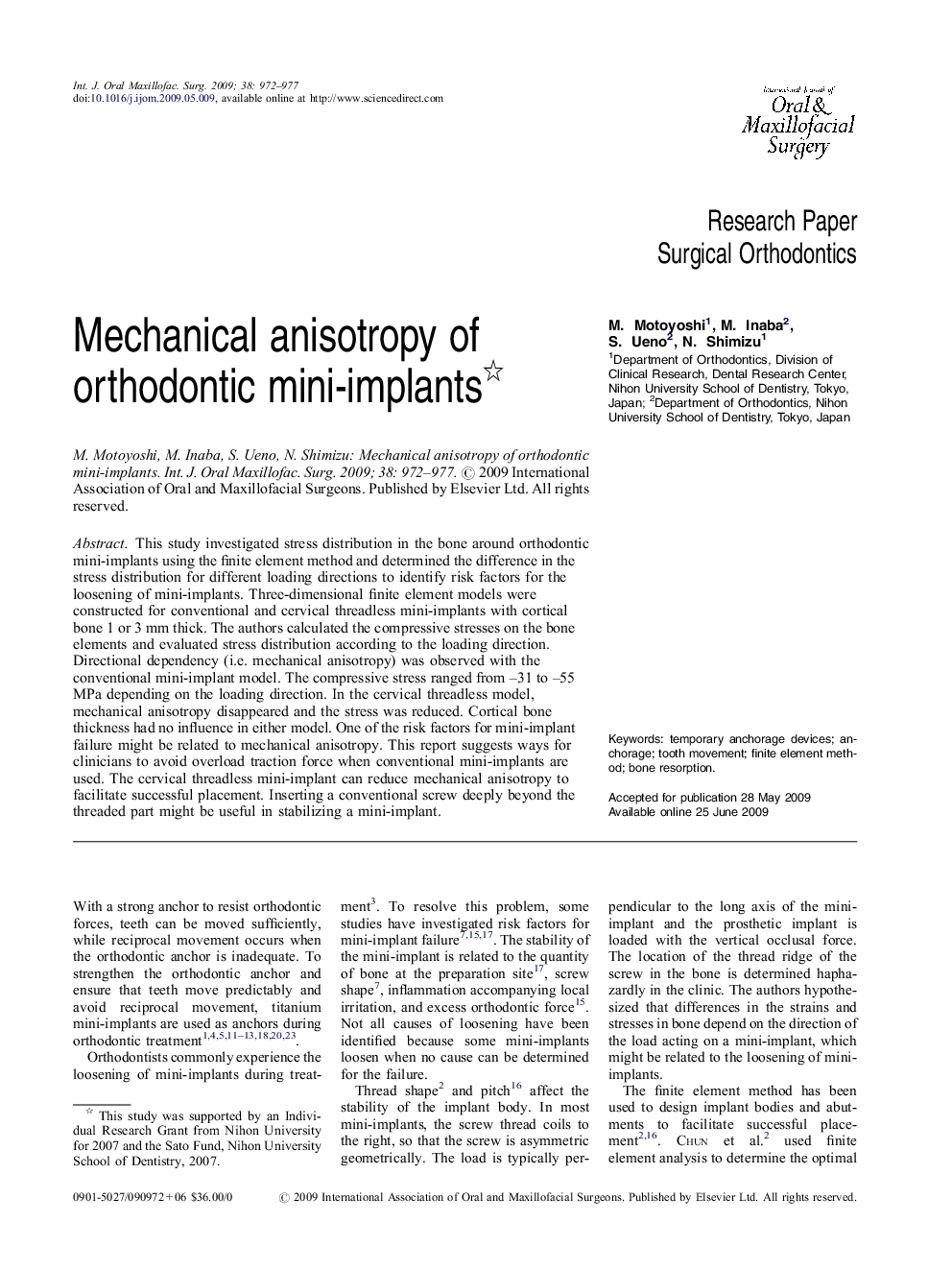| Article ID | Journal | Published Year | Pages | File Type |
|---|---|---|---|---|
| 3134266 | International Journal of Oral and Maxillofacial Surgery | 2009 | 6 Pages |
This study investigated stress distribution in the bone around orthodontic mini-implants using the finite element method and determined the difference in the stress distribution for different loading directions to identify risk factors for the loosening of mini-implants. Three-dimensional finite element models were constructed for conventional and cervical threadless mini-implants with cortical bone 1 or 3 mm thick. The authors calculated the compressive stresses on the bone elements and evaluated stress distribution according to the loading direction. Directional dependency (i.e. mechanical anisotropy) was observed with the conventional mini-implant model. The compressive stress ranged from –31 to –55 MPa depending on the loading direction. In the cervical threadless model, mechanical anisotropy disappeared and the stress was reduced. Cortical bone thickness had no influence in either model. One of the risk factors for mini-implant failure might be related to mechanical anisotropy. This report suggests ways for clinicians to avoid overload traction force when conventional mini-implants are used. The cervical threadless mini-implant can reduce mechanical anisotropy to facilitate successful placement. Inserting a conventional screw deeply beyond the threaded part might be useful in stabilizing a mini-implant.
